Image Archive
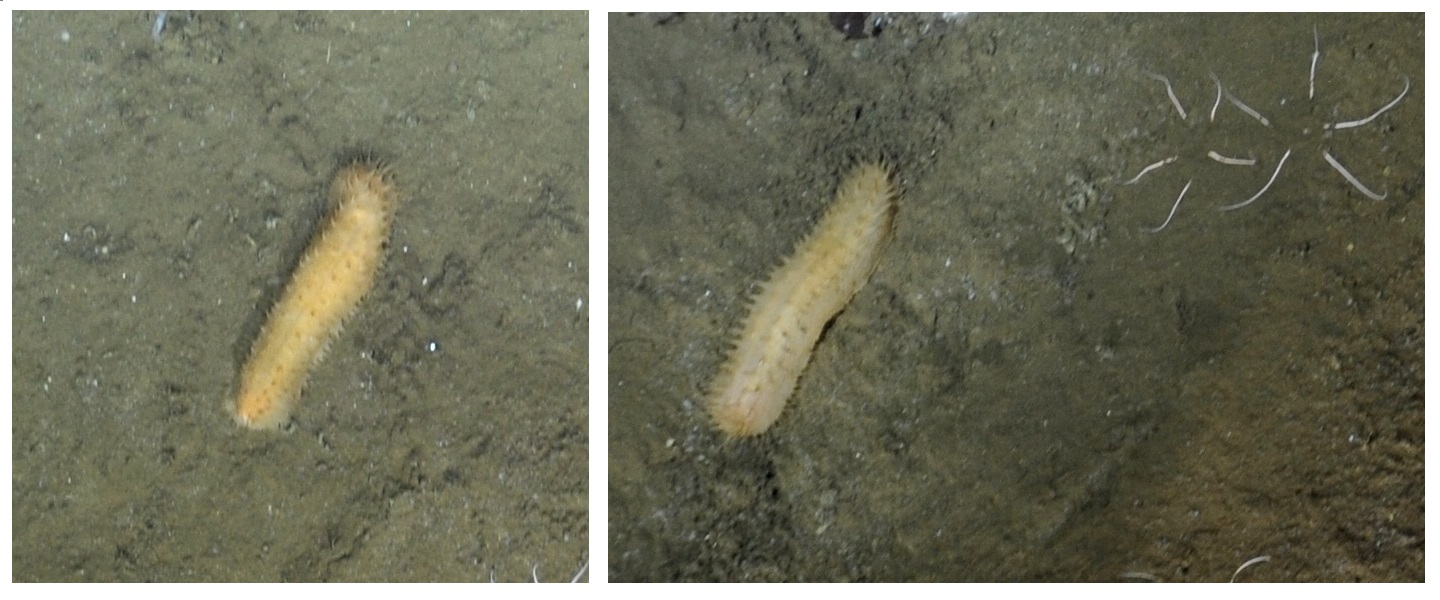

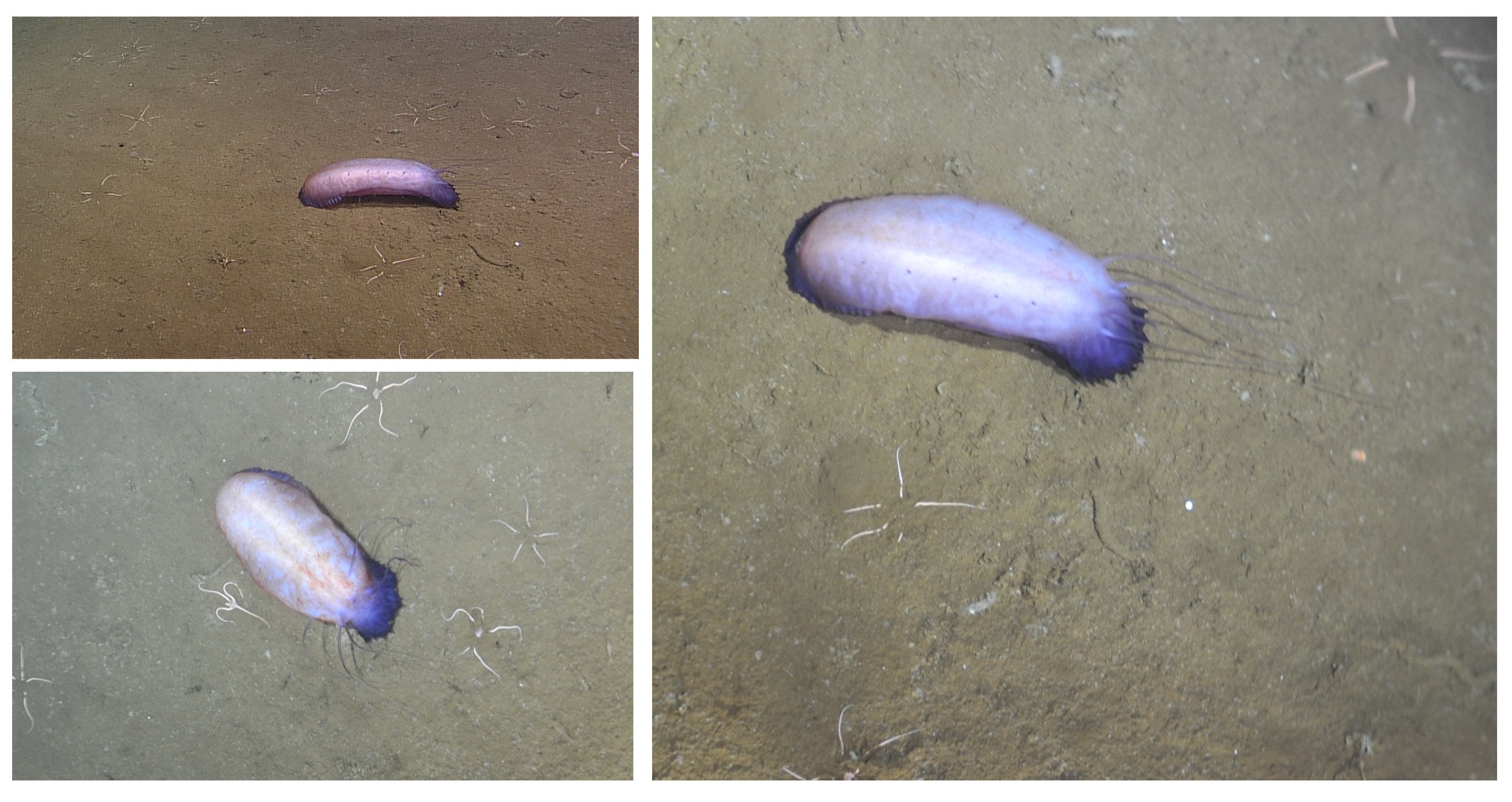





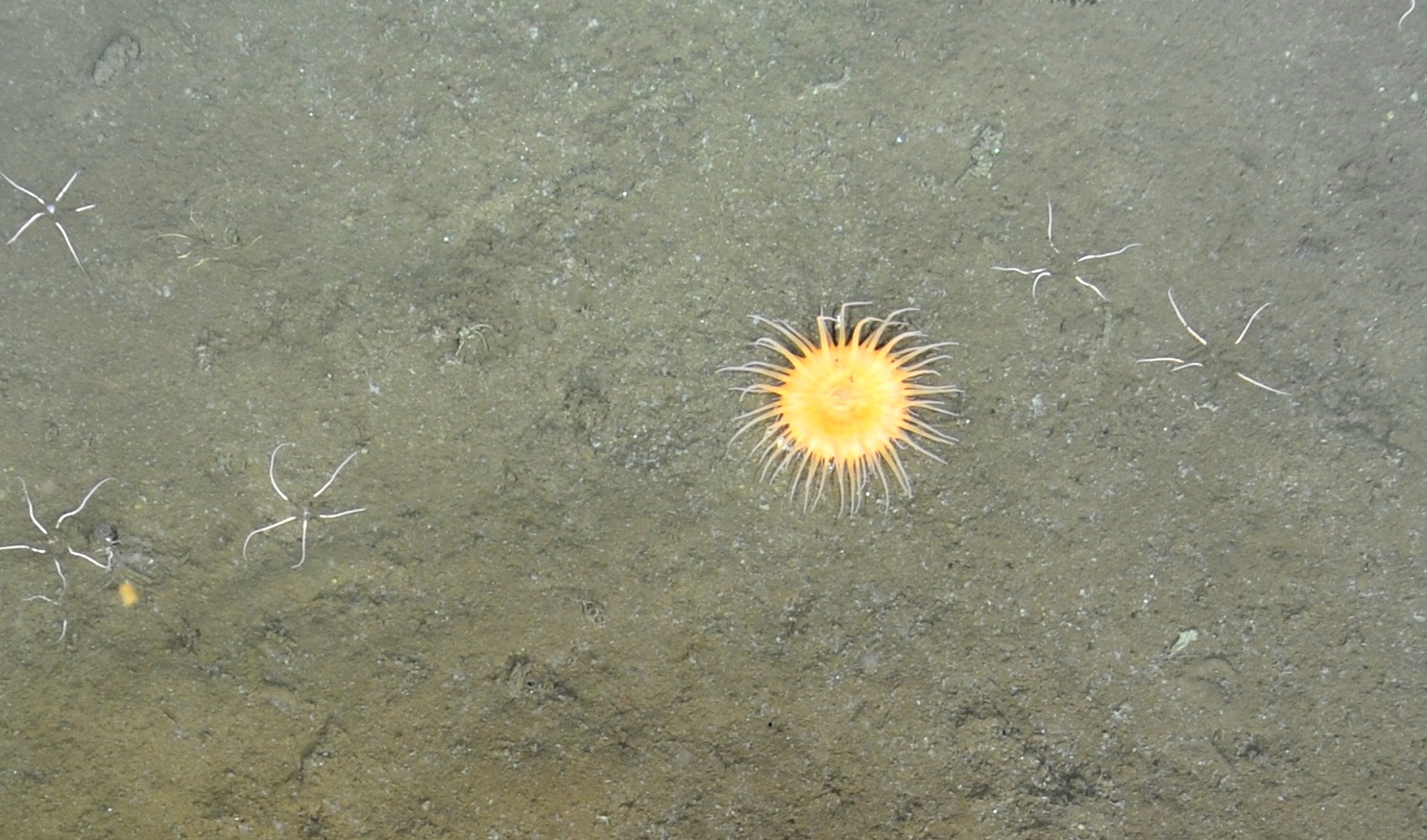


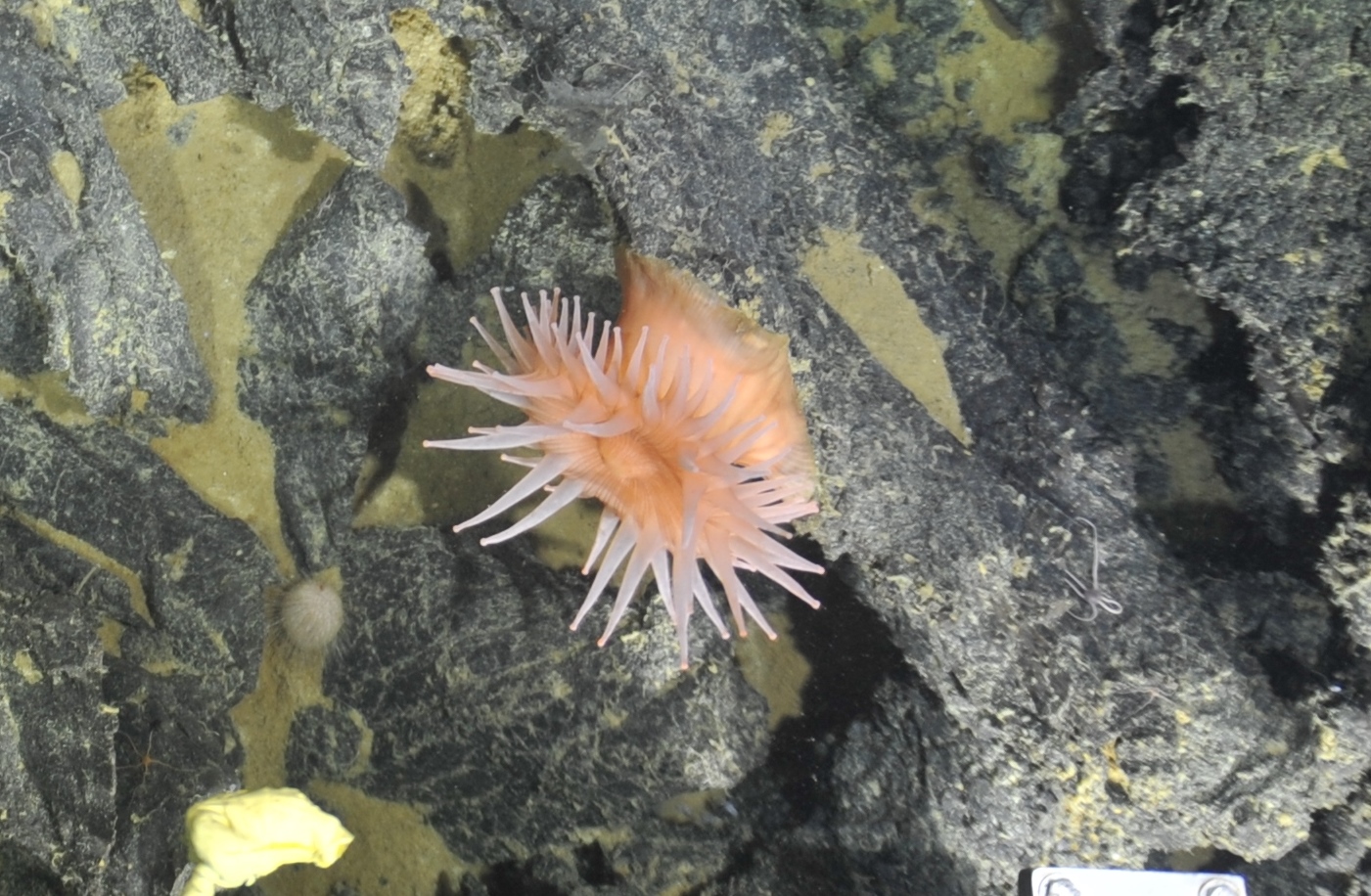












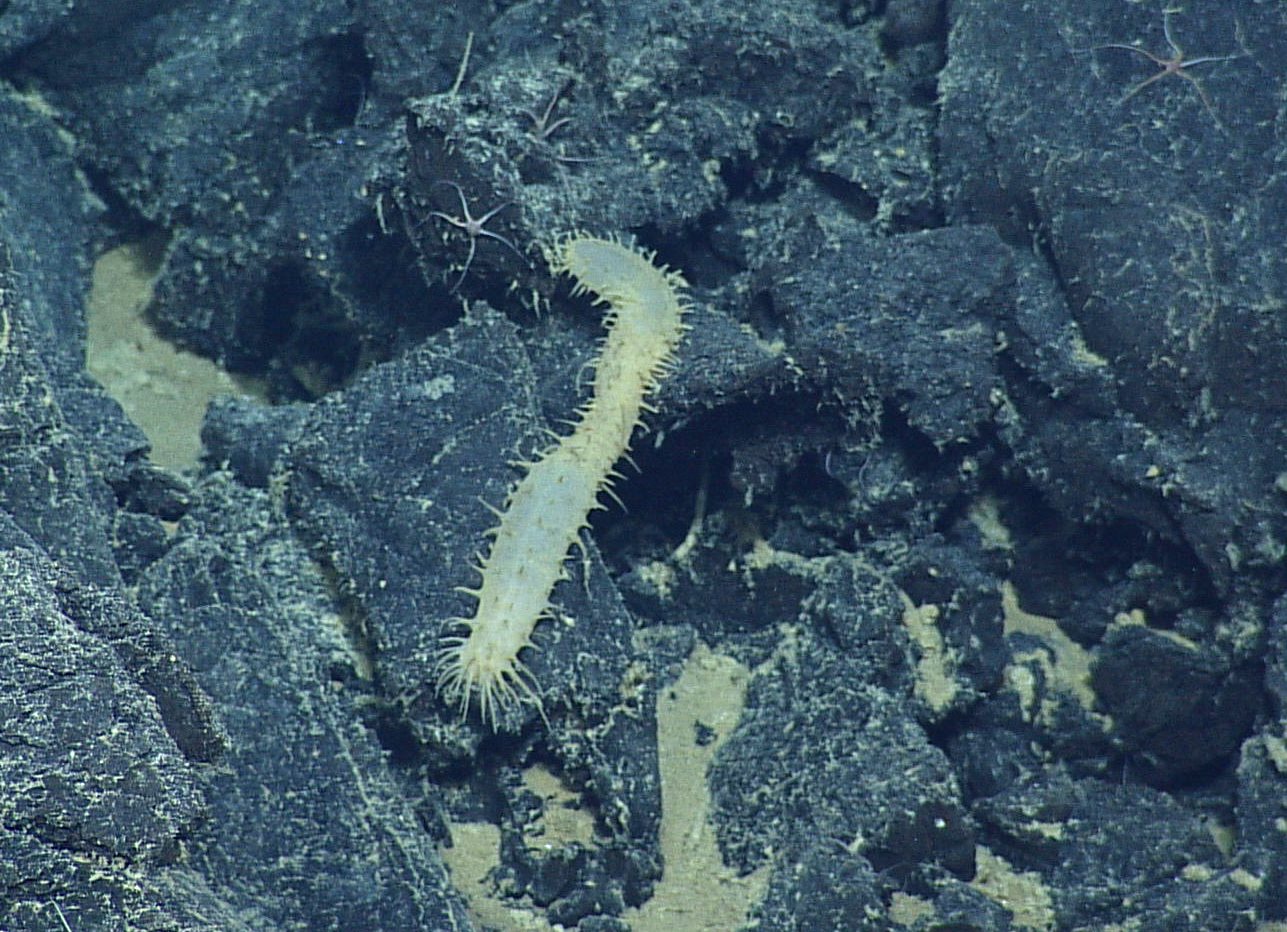




This unknown sea cucumber was found at the base of Axial Seamount, living among the brittle stars. Photo credit: NSF-OOI/UW/CSSF; Dive R1716; V14

This spiny Holothurian Deep-Sea Cucumber (possibly of Genus Pannychia) has been seen on many regions of Axial Seamount. Photo credit: NSF-OOI/UW/CSSF; V13

This large purple sea cucumber (Holothurian) was seen at the base of Axial Seamount, foraging through the sediments. This one is likely Paelopadites confundens. Photo credit: NSF-OOI/UW/CSSF; V14.

A current meter is held in the manipulator of the ROV ROPOS for installation at the International District 2 Site. Photo credit: NSF-OOI/UW/CSSF; Dive 1723; V14.

These small sea spiders are Pycnogonids (Phylum Arthropoda) and live among the tube worms and limpets on hydrothermal vents of Axial Seamount. Photo credit: NSF-OOI/UW/WHOI; V11

An interesting perspective of this Dinner Plate Jelly (Solmissus sp.) and the Remotely Operated Cable Laying System (ROCLS) spool, makes the jelly look enormous. Photo credit: Photo credit: NSF-OOI/UW/CSSF; Dive R1604; V13

These dinner plate jellies are a frequent sight during ROPOS dives on Axial Seamount. Photo credit: NSF-OOI/UW/CSSF; Dive R1713; V14

This large jelly is called a Fried Egg Jelly (Phacellophora cantschatica). It normally is a pelagic organism, however this one is on the seafloor, making it vulnerable to spider crab feasting. Photo credit: NSF-OOI/UW/CSSF; Dive R1619; V13

A solitary anemone lives on the sediment seafloor with brittle stars at the base of Axial Seamount. This may be a Jack-o-Lantern Lid anemone. Photo credit: NSF-OOI/UW/CSSF; Dive R1715, V14.

This unknown species of anemone was found on the sediments at the base of Axial Seamount. Photo credit: NSF-OOI/UW/CSSF; Dive R1624; V13

A low-frequency hydrophone (black tubular-shaped instrument in tripod with red legs), connected to a broadband seismometer, awaits installation by the ROPOS that will install this sensor in the International District 2 Site. Pea gravel bags in the background will be piled over the broadband to dampen any noise by local currents. Credit: Mitch Elend, University of Washington, V14.

This pink anemone was found at Axial Seamount, affixed to the lava rocks. Photo credit: NSF-OOI/UW/CSSF; Dive R1712; V14

An unknown anemone is attached to the lava rocks at Axial Seamount. Photo credit: NSF-OOI/UW/CSSF; Dive R1608; V13

The entire crew turns out for hand spooling ~800 ft of extension cable back onto the ROCLS drum that was recovered from the seafloor. Hard work, but lots of smiles. Photo credit: Mitch Elend, University of Washington, V14.

A bottom pressure-tilt instrument is installed at the summit of Axial Seamount in the International District hydrothermal field. This instrument measures the rise and fall of the seafloor due to melt migration in the subsurface. Currently, the seafloor is rising and this is believed to reflect the influx of magma into the core of the volcano.The instrument rests on a frozen lava flow - called a sheet flow. The small black marble in the yellow plate at the instrument base indicates that the platform it level. Photo credit: NSF-OOI/UW/CSSF; Dive R1723; V14.

Two Squat Lobsters on Escargot vent, Axial Seamount. Credit: UW/NSF-OOI/CSSF; V11

r1720

r1719

A bottom pressure-tilt instrument is installed at the Eastern Caldera Site on the summit of Axial Seamount. Image Credit: VISIONS'13, UW/OOI/CSSF; Dive R1617; V13.

A broadband seismometer installed at Eastern Caldera is coupled to a low-frequency hydrohone. Bags of pea gravel decrease "noise" from currents. Credit: UW/NSF-OOI//CSSF; ROPOS Dive R1722; V14.

Brittle star wars at the base of Axial Seamount, near to PN3A. Photo credit: NSF-OOI/UW/CSSF; Dive R1600; V13

University of Washington undergraduate students learn how a CTD works, the science behind this instrument package, and how to take water samples during the VISIONS'14 expedition. Image Credit: Mitch Elend, University of Washington; V14.

VISIONS'14 undergraduate students use the bow of the R/V Thompson for their outdoor study session. Image Credit: Leslie Sautter, College of Charleston; V14.

A rattail fish (Coryphaenoides acrolepis) is a common site at the summit of Axial Seamount. Credit: UW/NSF-OOI/CSSF; Dive R1720; V14.

A Deep-Sea Cucumber (possibly Pannychia moseleyi) inhabits the lava flows of Axial. Credit: UW/NSF-OOI/CSSF; ROPOS Dive R1721; V14.

A Goniasteridae seastar (unknown species) hangs out with the local resident brittle stars on Axial. Photo credit: NSF-OOI/UW/CSSF; Dive R1721; V14.

A zoroasterid sea star at Axial Seamount, likely Zoroaster spinulosus. Photo credit: NSF-OOI/UW/CSSF; Dive R1721; V14.

This spider crab takes full advantage of a large food source - probably a jellyfish or anemone - on Axial Seamount's lava floor. Photo credit: NSF-OOI/UW/CSSF; Dive R1720; V14.
- Anemone
- Animal
- Arthropod
- ASHES
- Axial
- Axial Base
- Axial Biology
- Axial Caldera
- Bacteria
- Basalt Lava
- BEP
- Biofouling
- biolgoy
- Biology
- Camds
- Camera
- Camhd
- Central Caldera
- Ciliates
- Cnidaria
- Coastal Biology
- Crab
- Deep Profiler Mooring
- Dive Highlights
- Eastern Caldera
- Echinoderms
- Endurance Array
- Engineering Team
- ENLIGHTEN 10
- Exploratorium
- Fish
- Geology
- HD Camera
- HPIES
- Hydrate Ridge
- Hydrates
- Hydrophone
- Hydrothermal Vents
- Illustration
- Inshore 80 Meters
- Instrument
- International District
- J-BOX
- Jason
- Jellyfish
- Junction Box
- K12
- Lava
- Mollusk
- Moorings
- Nodes
- Nudibranch
- Octopus
- OOI
- Oregon Offshore
- Oregon Offshore 600 m
- Oregon Shelf
- Oregon Slope Base
- People
- PN1B
- PN1D
- Polychaetes
- PPSDN
- Primary Node
- RASFL
- ROCLS
- ROPOS
- ROPOS Dives
- ROV Team
- RV Revelle
- RV Sikuliaq
- RV Thompson
- Salp
- Sample
- SC13
- Science Team
- Sea Cucumber
- Sea Star
- Sea Urchin
- Seafloor
- Seismometer
- Sensors
- Shallow Profiler Mooring
- Shark
- Shipboard
- Shore Station
- Slope Base
- Smoker
- Soft Coral
- Southern Hydrate Ridge
- Sponge
- Squid
- Students
- Students & Guest Participants
- Tmpsf
- Tubeworms
- VISIONS 11 Leg 1
- VISIONS 11 Leg 2
- VISIONS 11 Viewers
- VISIONS 13
- VISIONS 14
- VISIONS 15
- VISIONS 16
- VISIONS 17
- VISIONS 18
- VISIONS 20
- VISIONS 22
- VISIONS 23
- Visualization
